The Cold War E01 - What started the Cold War?
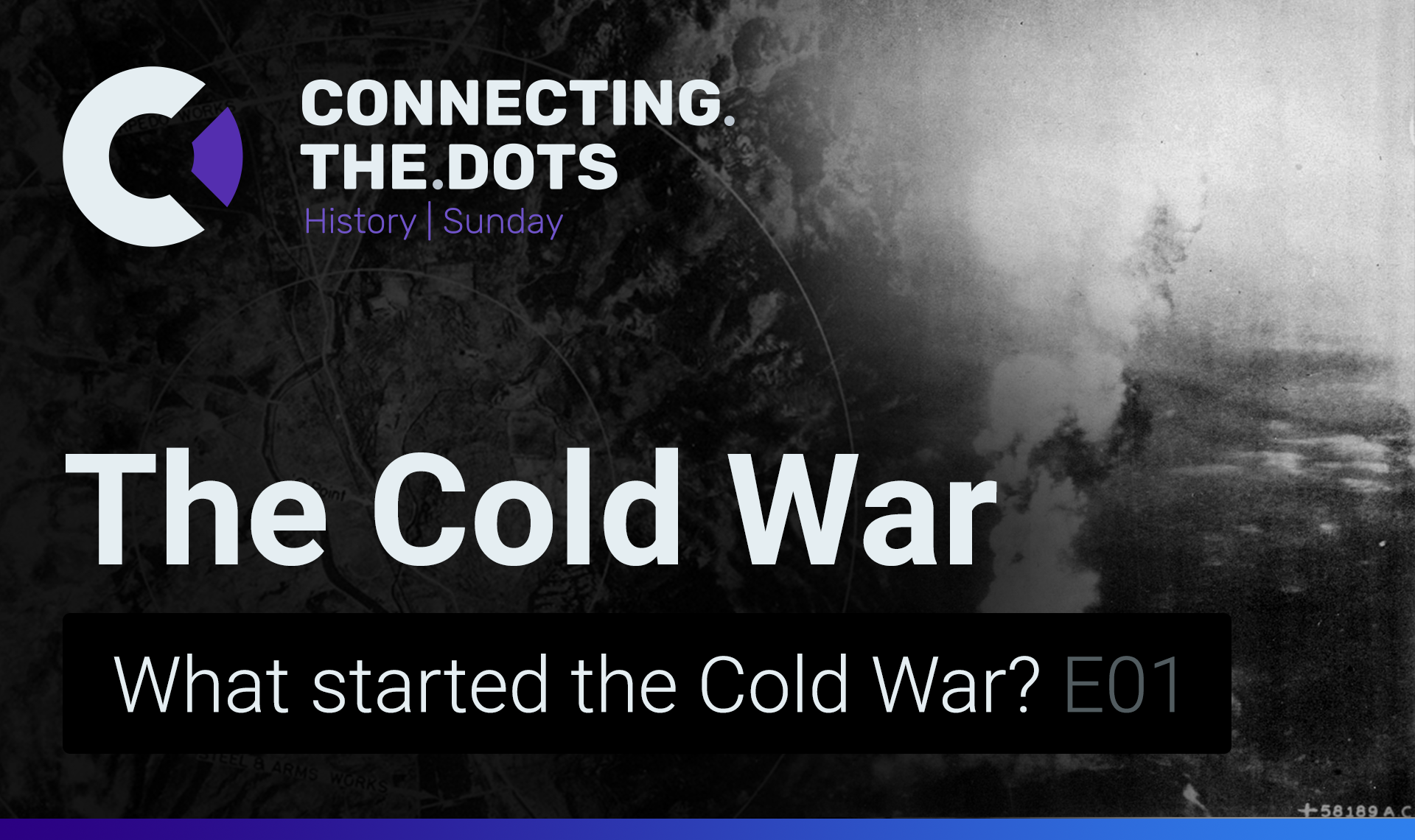
The significance of Cold War
The Cold War years can be described as one of the most exciting periods in the history of World War. This conflict demanded the enormous power and means from both hostile blocks even though there had not been an open clash. The Cold War years was a period of perfect conditions for the development of all types of armament. Warring states during the first or second world wars were forced to expend enormous resources to ensure warring armies with the production of armament, ammunition, and munitions. Therefore, they could not afford the high costs for global military projects. The absence of fixed costs during the Cold War years, a war without significant military equipment losses and various industrial destructions has allowed for military blocks to concentrate its efforts in the field of improvement of defense equipment by investing huge assets.
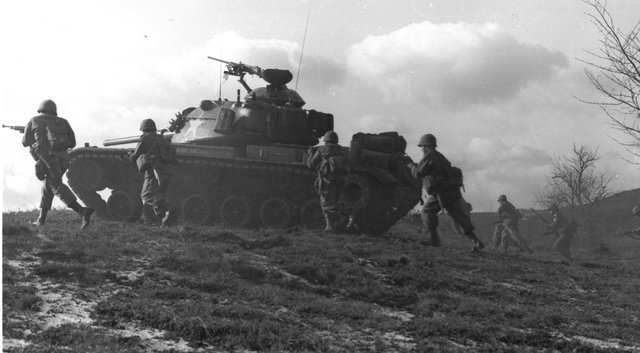
M60 tank introduced in 1960 and in service to this day. Photo source: flickr.com
You can hardly find a type of armament which during the Cold War years has not sustained a significant evolutionary change. Tanks, shells, guns, infantry firearms or grenades which seemed perfect at the end of World War II, have evolved in such a way during Cold War years that even in their shape, appearance and operation of the principle have ceased to be similar to the recent older generation – the armament of World War II.
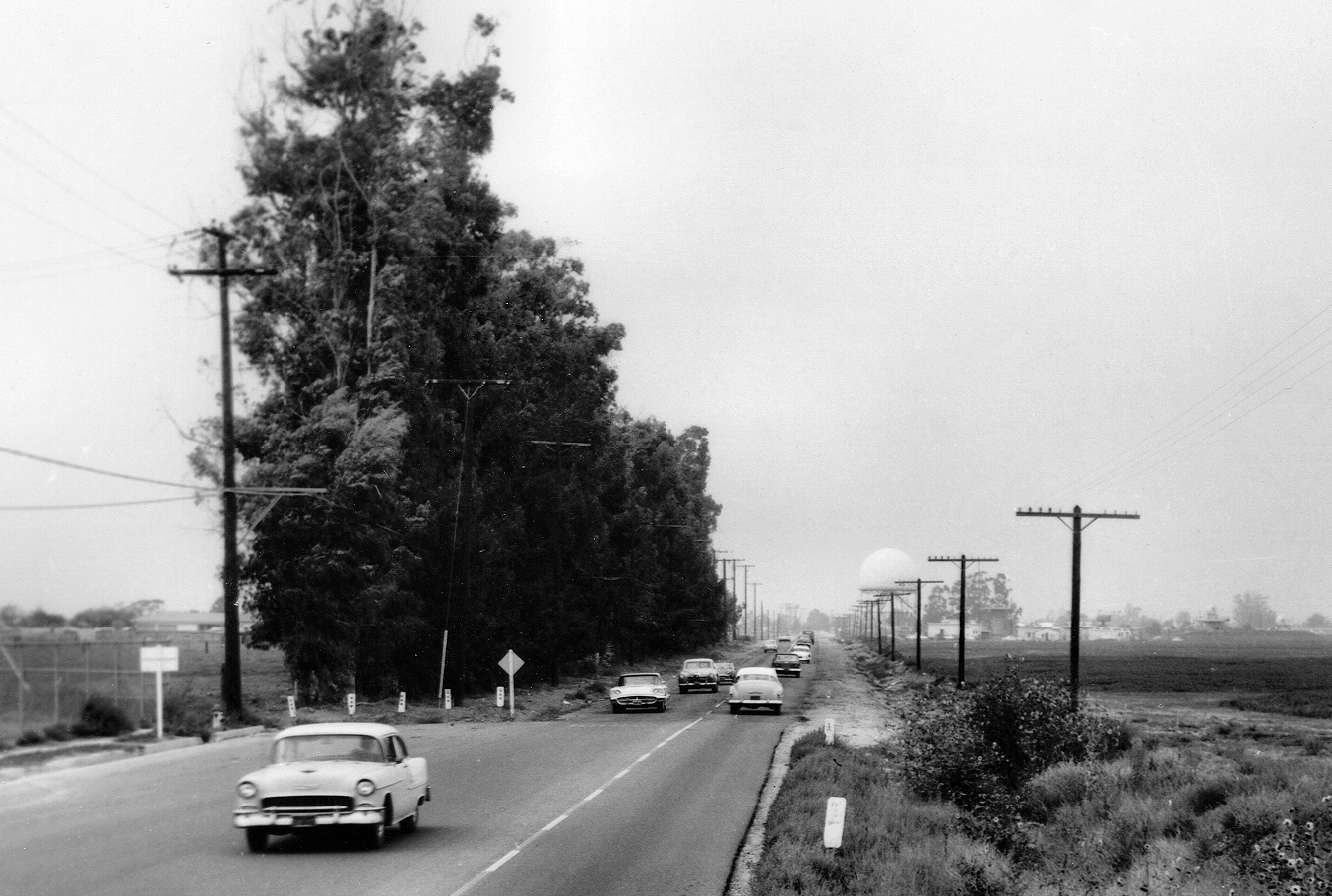
Car traffic near Nike Missile emplacement, Knott Ave., Garden Grove, California, 1962. Photo courtesy Orange County Archives. Photo source: flickr.com
At first glance, it might seem that the armament which was produced during the Cold War years is only millions and billions of dollars and rubles spent on the military industrial equipment lying unused for decades in military warehouses. You could also think that all that money spent on the arms race would have been much more efficient if it was directed to the civilian economy, but do not forget the fact that the military industry has always been in the frontier of scientific achievements for better or worse and that sooner or later all of that investment came to the civilian market, bringing unprecedented innovation, efficient solutions, and high technology.
Now lets dive deeper into the causation of these events.
1945 Hiroshima and Nagasaki bombing
On the eve of the end of World War II, Japanese cities Hiroshima and Nagasaki were destroyed with the weapon of a new generation - a nuclear bomb. This combat operation, which killed more civilians than enemy’s troops, had a significant psychological impact. The new weapon offered huge opportunities, it became evident that the future war will be a nuclear one.
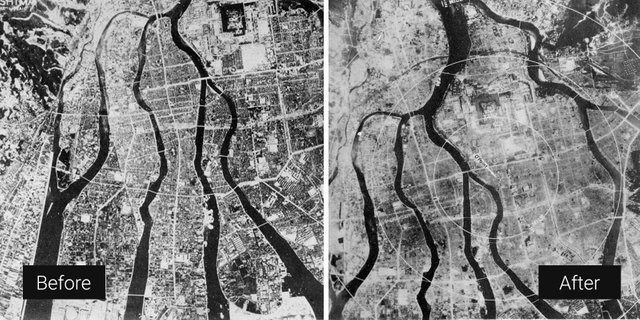
Before(left) and after(right) the bombing of Hiroshima with a uranium-based nuclear bomb code-name "Little Boy"(1945). Source: allworldwars.com
End of World War II
While these atomic bombs are credited for the end of World War II, as just 8 days after the first use of uranium-based nuclear bomb called “Little Boy” over the Hiroshima and 5 days after the bombing of Nagasaki with implosion-model plutonium bomb “Fat Man”, Emperor Hirohito announced Japan’s unconditional surrender and the acceptance of the Potsdam Declaration, this might have triggered an arms race between the U.S. and the Soviet Union.
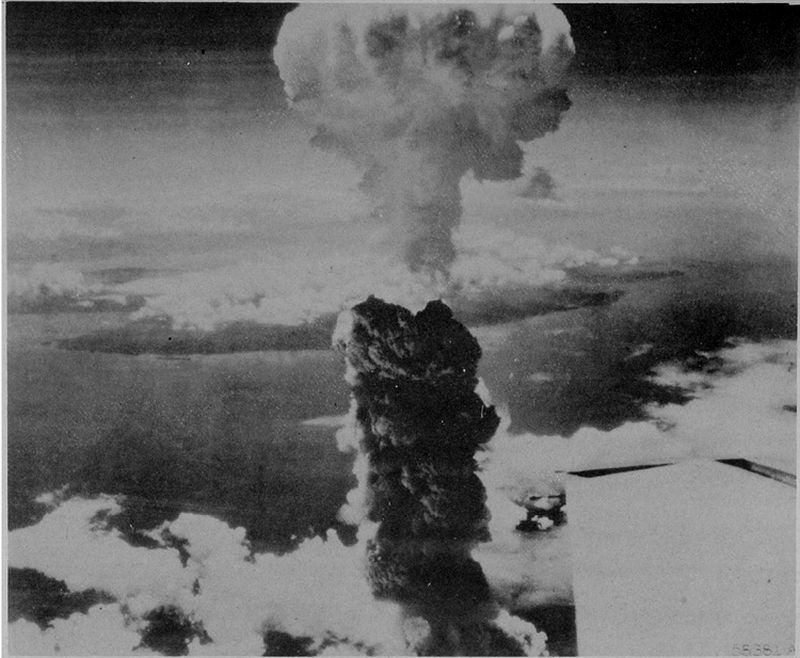
The atomic bomb explosion over Nagasaki taken from about 13 km (8 miles) distance. The mushroom cloud of explosion is about 12 km (40.000 feet) tall. Source: allworldwars.com
This race was a huge part of the whole tension, called the Cold War, between powers in the Eastern Bloc and Western Bloc, and took until 1989 when communism fell in Eastern Europe.
It is said that the usage of a nuclear bomb on Hiroshima and Nagasaki was done to intimidate the Soviets, but I didn’t take long for USSR to build their first nuclear bomb in response.
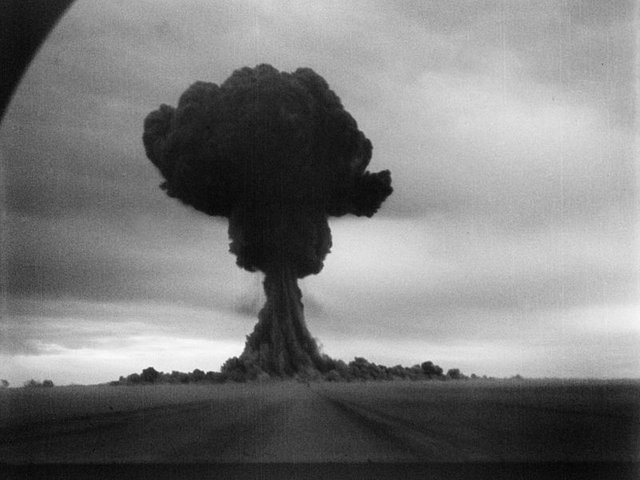
The mushroom cloud from the first Soviet nuclear bomb RDS-1 test(1949). Source: wikipedia
Only 4 years later, in 1949, thanks to a huge Russian intelligence spy rings and captured German scientists, the Soviet Union secretly conducted the first successful nuclear weapon test (RDS-1 also known as device 501 and First Lightning), based on the U.S. design at the Semipalatinsk in Kazakhstan.
Cold war hunt of German scientists
The United States and the Soviet government concentrated their Air Forces for the construction of nuclear armament, as well as new types of carriers, able to deliver nuclear device up to the target after the end of World War II. Both States formally were allies, but they did not have the big Illusions about the longevity of this union. The U.S and USSR tried to collect as many information as possible about German scientists in the military field in order to gain more momentum in the arms race. In this way, Reich III Imperial’s military strength has incarnated in a new form.
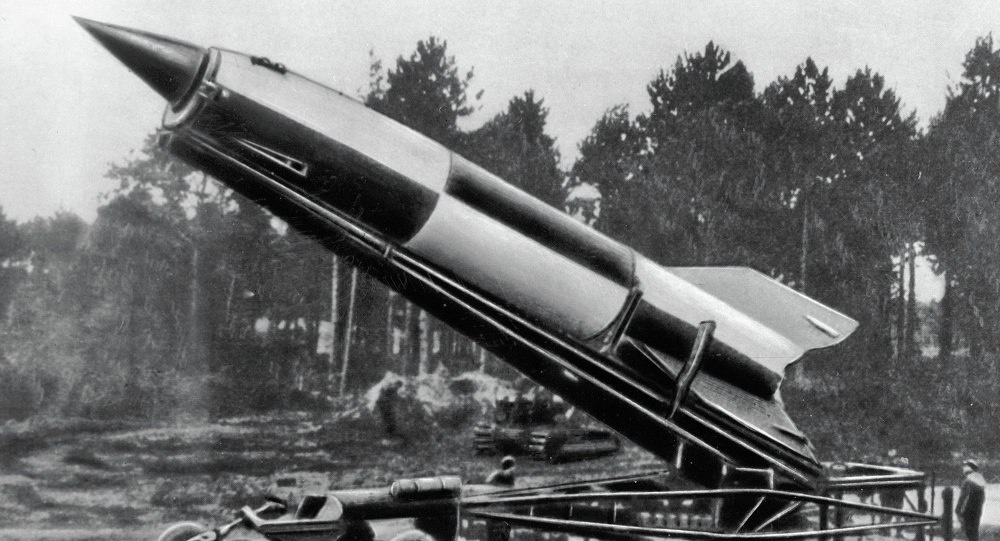
V-2 were fired at targets(including London) from mobile rocket launchers. Source: sputniknews
The first Soviet missile R-1 was a copy of famous German ballistic missile V-2, and American intercontinental ballistic missile’s program was led by former Sturmbannfuhrer SS Werner von Braun in 1956.
Intercontinental ballistic missiles
The scientific experiments with ballistic missiles have proven that it is possible to create the Intercontinental flight range devices and carry a weight of several tonnes. With this technology and the use of nuclear, and later thermonuclear charge, has allowed U.S. and USSR to possess a weapon capable to destroy any city with all of its inhabitants in several minutes, though the accuracy of the first missiles was not very good.
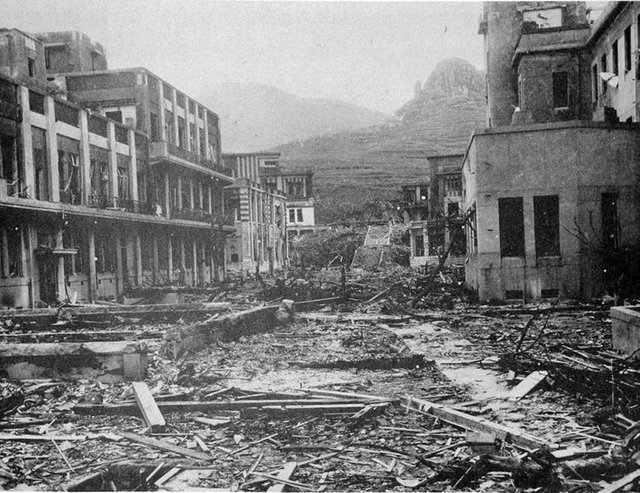
The Nagasaki Medical School and Hospital. Source: allworldwars.com
On the brink of the end of civilization
For the first time in history, human beings get all possible technical capabilities to destroy their own civilization. The famous physicist Albert Einstein described the immense threat of possible war, saying:
“ I know not with what weapons World War III will be fought, but World War IV will be fought with sticks and stone”.

This article is a part of the bigger historical series about the Cold War. Follow me for a new history post on every Sunday.
Inspired by the Cold War Museum at Plokstine Missile Base in Lithuania
Author: Mantas Ališauskas
Photography: The Manhattan Engineer District, Photo courtesy Orange County Archives.
Design: Mantas Ališauskas
Website: http://www.ctdots.eu
You got a 20.00% Upvote and Resteem from @ebargains, as well as upvotes from our curation trail followers!
If you are looking to earn a passive no hassle return on your Steem Power, delegate your SP to @ebargains by clicking on one of the ready to delegate links:
50SP | 100SP | 250SP | 500SP | 1000SP | 5000SP | Custom Amount
You will earn 80% of the voting service's earnings based on your delegated SP's prorated share of the service's SP pool daily! That is up to 38.5% APR! You can also undelegate at anytime.
We are also a very profitable curation trail leader on https://steemauto.com/. Follow @ebargains today and earn more on curation rewards!
Awesome, history, my kind of thing!
Thank you, good to hear. I'll post the second segment on Sunday:)
"The nuclear arms race is like two sworn enemies standing waist deep in gasoline, one with three matches, the other with five."
CARL SAGAN
Thank you for adding another great quote from a great person.
Current political situation is super dangerous, this is why I think people, especially younger generation, need to relive and learn what it was like back then, during the Cold War days.
I totally agree with you and bravo for your effort!
Thanks again, I appreciate it:)
I really loved your post. I have always been very interested in everything that is The Cold War
Thank you a lot, I'll add next post about the Cold War on Sunday:)
Resteemed by @resteembot! Good Luck!
Check @resteembot's introduction post or the other great posts I already resteemed.
This post was upvoted and resteemed by @resteemr!
Thank you for using @resteemr.
@resteemr is a low price resteem service.
Check what @resteemr can do for you. Introduction of resteemr.